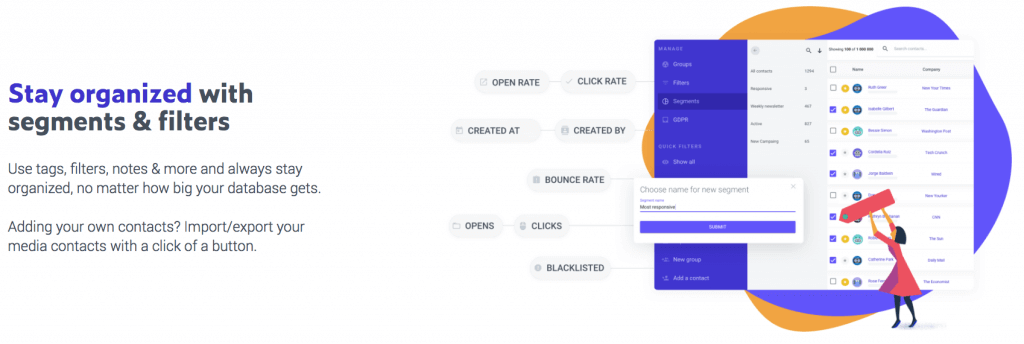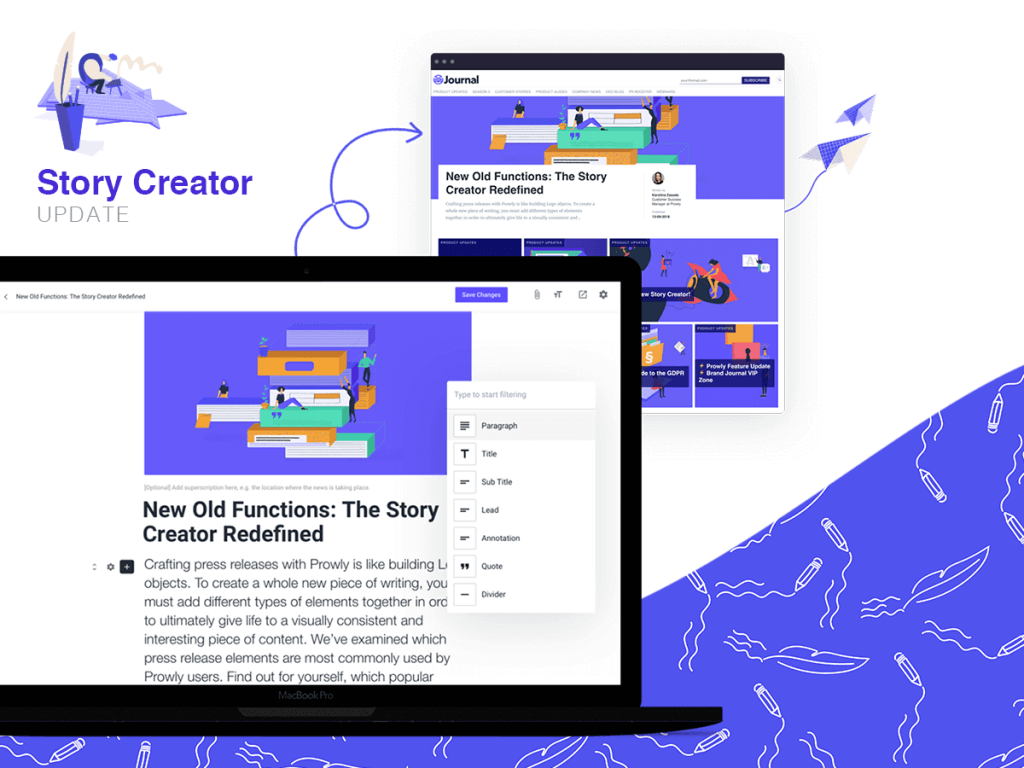Public Relations are not meant for large corporations only, small businesses can benefit equally or more from such efforts. 70% of publishers say that they are open to getting pitched, as long as the pitch is up to their beat and PR experts understand this.
Involving a PR expert seems more important than ever in the small business industry because it can save money and effort in the long run, while creating credibility.
How to launch and maintain PR efforts?
Discover and tell a unique, personalized brand story
There is a general misconception in the small business industry that brand management can be detrimental to their business prospect as it dilutes the human factor. However, according to current reports, 89% of consumers stay loyal to a brand that shares their value.
When grabbing the attention of the target audience is the goal, business owners need to involve themselves and come forward with the basic, true story of the business’s origin. It can be a simple but heartfelt family heirloom, or the result of an accidental inheritance, or a lifelong dream come true. The story needs to find the right voice and delivery.
Focusing on the uniqueness of the business is a must. There can be 100s of similar businesses in the area but the business owner must craft, mold, magnify, and personalize their story to create a vacuum for their specific business needs. Customized content production, complete transparency, supremely helpful customer service, anything can be the “IT” factor.
It is a known fact that it takes 5 to 7 impressions for people to remember a brand, and according to Contently’s stats, 61% of people are more interested in buying from companies delivering unique content. Therefore, not only should the brand story be genuine and unique, but it should also be consistently displayed to make an impression.
Plan the PR campaign
If random PR strategies are thrown into the mix in the name of marketing to attract unsuspecting journalists, bloggers, and social media influencers, the chances of an effective outcome are nil. If a business fails to plan their launch, then they might as well plan to fail.
The creation of an editorial calendar might be the right choice if the PR strategy of a business is chaotic. Finding effective and relevant industry outlets is the first step, and the next step is to define the quality and quantity of content that a company wants to produce for a stipulated time.
The benefits of creating and customizing an editorial calendar are that this frees up a lot of time and decreases stress for the owner. This allows the owner to have pre-organized talking points for the desired content, and to have a prior discussion with the editor about what relevant changes can be made to the content, to increase its effectiveness. The PR campaign should also involve extensive research on target consumers. Exclusive surveys, personalized emails, and word of mouth could act as vehicles for businesses seeking to know their customers.
Find the right Pitch
Associating with a product or service before it has been evaluated by the consumers can prove fatal for small businesses if it doesn’t work as promised. However, the value of a product or service can be increased tenfold if the seller is an expert in the industry.
Perfecting the product/service and ensuring that it has the best aspects of its competitors covered is important. So is improving on the features to add more value and uniqueness. Getting the opinion of a small group of trusted consumers of a similar product/service can help ascertain the return and reaction from the intended consumers.
Involve influencers in the PR strategy
Today, the audience relies more on the endorsements of their favorite influencers and less on advertisements on the TV or even display ads. The idea is that millennials and Generation Z are the only people affected by this apparent ‘fad.’ However, generation X and the baby boomers are the strongest economic force in the world and they too are turning to gadgets and their younger generation for product or service advice.
Studies have identified that baby boomers and generation X spend more time on the internet than the younger population. Not only that, but they also share more content. Therefore, businesses should involve more influencers from the content and age category of their target audience to connect with the right people.
Discover with Prowly relevant media contacts and influencers from around the world with up-to-date contact information:

Keep up with the trends and needs of the industry
A successful business requires a lot of consistent research and behind-the-counter work. Building and managing a PR strategy might seem easy enough, but the hours spent in research and the constant requirement for upgrades can make it a pretty daunting task.
The best way to maintain the upgrades is to read up a lot on the industry and its evolution. The next step for the new era is to set up Google Alerts and Twitter Mentions (or try more advanced Media Monitoring) customized to the company name, competitors, industry, and other relevant keywords.
Finally, it is of utmost importance to find and follow the best in the industry. Learning from the competitors and their success can be key to the creation of a successful PR strategy.
Extra tip: to make sure that your PR activities drive results, you need to analyze the right metrics. Don’t worry,
Here are two guides about metrics to follow, along with tips on how to efficiently use them:
👉🏼 Share of Voice in PR: How to Calculate Your Brand SOV
👉🏼 Media Mentions Guide: How to Track Media Mentions Effectively
We have also prepared special guides about PR metrics to leave behind (and what to use instead):
👉🏼 What is UVPM aka Domain Reach in PR? (UVPM metric alternatives)
👉🏼 What is Advertising Value Equivalency in PR? (+ AVE Alternatives)
Charity begins at home
As a small business, giving to the local community and participating in charitable events is deemed commendable. This creates communication channels, builds trust, amps the company’s brand, and becomes a part of the local community.
The primary focus of this should be finding a charity that resonates with the belief system of the business. One can sponsor an event, operate booths at local fairs or festivals, participate in fundraisers, or even create fundraisers through fun challenges just like the ice bucket challenge for ALS.
Some of the successful PR efforts to learn from include:
- The World’s Toughest Job (Corporation)
MullenLowe did a wonderful job for American Greetings through the strategy in which a fake job posting was created citing the responsibilities of motherhood. Then, the reactions of the applicants were recorded to capture their emotions after learning about the reality of the post. This helped boost the sale of American Greetings by 20%.
- Mohop (Small Business)
Architect Annie Mohaupt created Mohop in the year 2005 as an eco-friendly footwear alternative with infinite interchange options. The primary goal of the campaign was to raise $50,000 for the Kickstarter campaign of the company to increase production and the secondary goal was obtaining new followers.
The Kickstarter campaign rewarded the contributors by offering them a pair of revolutionary sandals. The campaign was promoted through social media outlets like Facebook, Twitter, Instagram, and Pinterest. Email promotions were also done. The winning words, however, proved to be ‘artisanal.’ This was an award-winning campaign.
Conclusion
The need of the hour is clear; PR efforts are getting rewarded more and more with passing time. However, the effectiveness of different tactics is changing rapidly and businesses need to keep up with the changing time to make plausible, positive difference in the small business industry.
When doing a PR outreach keep in mind that times are changing and something that could ‘wow’ a journalist a few years back, won’t impress him today. Think about what will be a trend next year and apply it now. Remember – you snooze, you lose.
Check how Prowly may improve your press outreach during a free 7-day trial:


